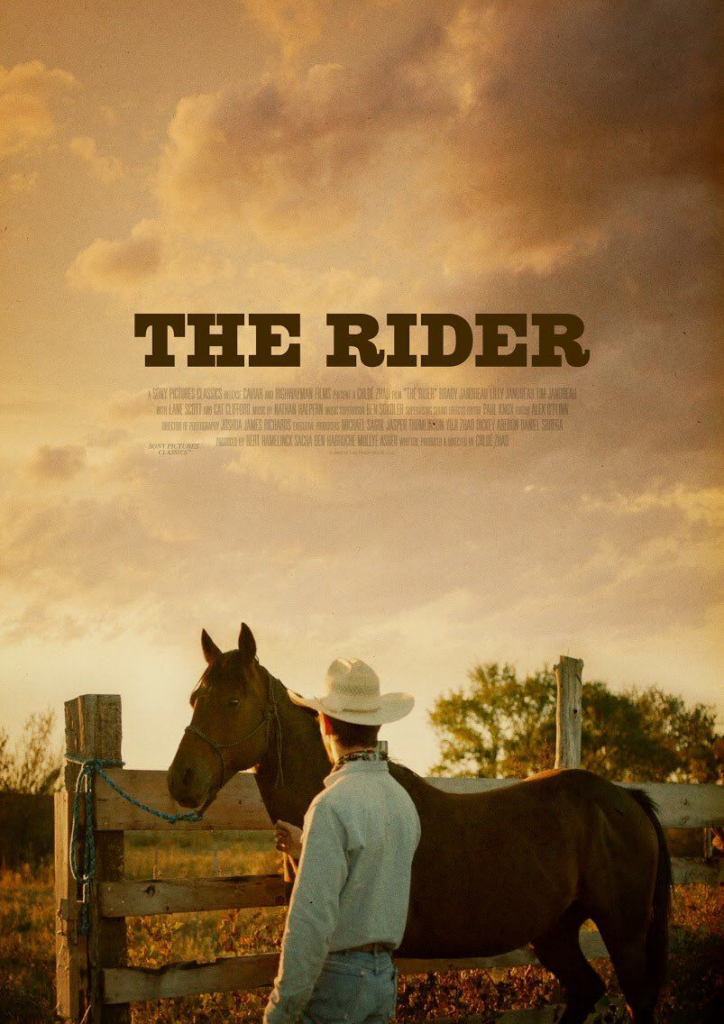
THE RIDER
(director/writer: Chloé Zhao; cinematographer: Joshua James Richards; editor: Alex O’Flinn; music: Nathan Halpern; cast: Brady Jandreau (Brady Blackburn), Tim Jandreau (Wayne Blackburn), LillyJandreau (Lilly Blackburn), Lane Scott (Himself), Cat Clifford (Himself); Runtime: 104; MPAA Rating: R; producers: Bert Hamelinck, Sacha Ben Harroche, Mollye Asher; Caviar, Highwayman Films; 2017)
“Gripping rodeo film showing sympathy for the Native Americans living in need on the Pine Ridge Indian Reservation in South Dakota.“
Reviewed by Dennis Schwartz
Chinese-American filmmaker Chloé Zhao (“Songs My Brothers Taught Me”), who resides in Denver, is the writer-director of this gripping rodeo film showing sympathy for the Native Americans living in need on the Pine Ridge Indian Reservation in South Dakota. It’s filmed with a non-professional cast, who are real-life Lakota Sioux rodeo riders. They portray fictionalized portraits of their characters that reflect on their real-life. The filmmaker lived on their reservation for awhile, so she knows her cast well. The melancholy film revolves around the 20-year-old Sioux cowboy Brady Jandreau, playing Brady Blackburn, who gets a metal plate in his head and incurs neurological seizures in his right hand, after a near- fatal rodeo injury over a bucking bronco (which was the same injury for the real-life Brady Jandreau). The doctor tells him that he’ll never ride again. This puts Brady in a pickle, since the love of his life is riding and is how he supports his family. Brady’s mom died of cancer many years ago. His alcoholic/gambler horse trader dad (Tim Jandreau) is a deadbeat. His 15-year-old kid sister Lilly Jandreau has limited intelligence because of a birth defect. His best friend, the bull rider Lane Scott, can’t speak and has been institutionalized because of ailments from a car accident and various rodeo tumbles. To survive in his trailer, with no more support from his son, dad sells Brady’s favorite horse. Eventually Brady finds peace of mind in training quarter horses, which looks like his best hope for survival in the future. It’s a lyrical film that lacks sentimentality and resists unnecessary emotional manipulation. The engaging photography makes the most of the busy story with the following refreshing shots of the landscape, the moonlit campfires and in the faces of the stoical Indians. It’s a small film with a big heart, one that most filmmakers would have not gotten the same honest results from.
REVIEWED ON 5/26/2018 GRADE: B